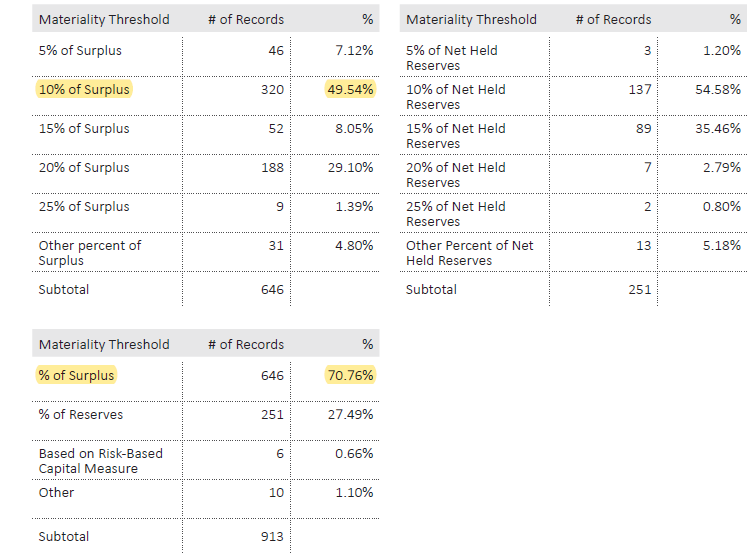BM.RMAD
Reading: “Risk of Material Adverse Deviation Study Note,” April 2023.
Author: Brandt, E.A. and Maxwell, L.A.
BA Quick-Summary: Schedule P - Loss & LAE Reserves
About 30% of Statements of Actuarial Opinion reviewed indicated significant RMAD (with a higher prevalence among stock insurers compared to mutual companies.) |
Contents
Pop Quiz
Study Tips
Everything in this reading is covered in the other SAO readings. You can skip this reading entirely without missing any important information. Having said that, it's well written and might make good bedtime reading. It's got some pretty good examples so it reinforces the material you've already covered.
Estimated study time: 20-30 minutes (not including subsequent review time)
BattleTable
No past exam questions are available for this reading.
reference part (a) part (b) part (c) part (d)
In Plain English!
Introduction
ASOP.36 states the following:
- The actuary should consider whether there are significant risks and uncertainties that could result in future paid amounts being materially greater than those provided for in the reserves.
That's blazingly obvious! Even Ian-the-Intern gets it!
Materiality
The materiality standard should be chosen based on:
- the actuary’s professional judgment
- any applicable materiality guidelines or standards
- the intended purpose of the SAO
We previously covered common choices for a materiality standard. This reading has a table showing the proportion of insurers that selected the various options.
- 71% chose % of surplus
- 50% of those used a percentage of 10%
Risk of Material Adverse Deviation
There are 2 quantitative tests for RMAD, both of which have been discussed in previous readings:
- [1] (reserves) + (the materiality standard)
- [2] high end of actuary's reserve range
For the comparison test, the rule is:
- (reserves + materiality standard) < (high end of actuary's reserve range) ==> YES (to RMAD)
- (reserves + materiality standard) ≥ (high end of actuary's reserve range) ==> NO (to RMAD)
| Note: If the actuary didn't produce a range of estimates then the comparison test is not even possible. |
This reading makes the additional point that these quantitative tests are not definitive. Even if the conclusion is "NO" from both tests, the actuary should still apply qualitative tests to make the final determination regarding the existence of RMAD. Considerations include:
- long-tail or volatile lines (WC, liability lines)
- catastrophes from late in the year that may not be reflected in the reserves
- excess claims that are not reported to the (re)insurer until the retention is breached
Conversely, even of both quantitative tests indicate "YES" to RMAD, the actuary doesn't necessarily conclude RMAD exists. There could be mitigating circumstances embedded in the qualitative considerations.
RMAD in Practice
This short section states that of the SAOs reviewed for the writing of this paper, 30% stated that "YES" to RMAD. I found that surprising!
But stating that RMAD exists doesn't necessarily mean the company is in trouble. It's simply to inform the Board of Directors of the possibility that a company’s booked reserves may develop beyond the principal user’s expectations.
